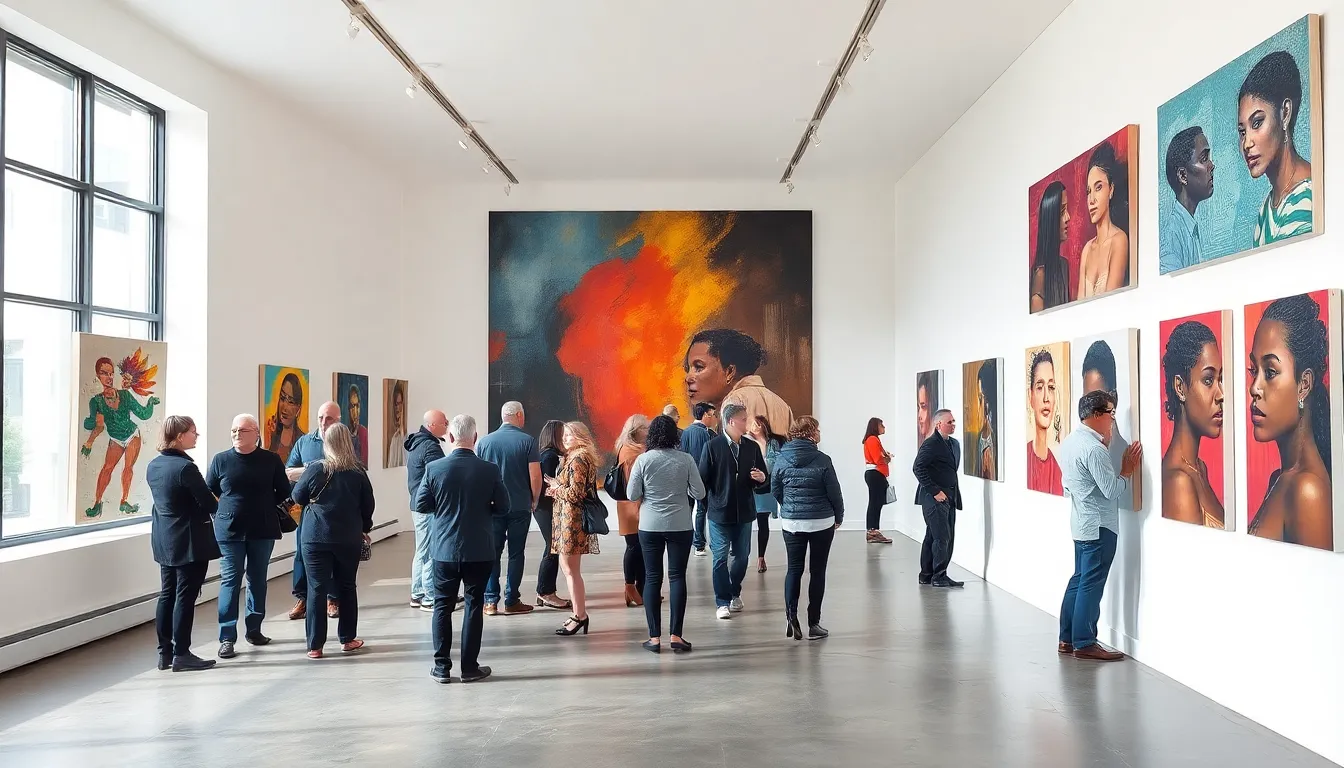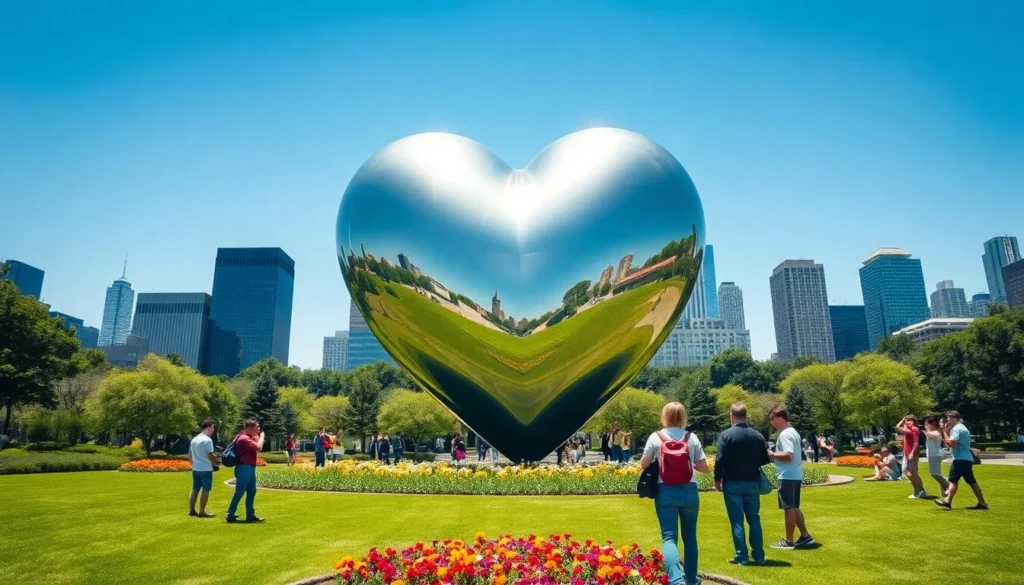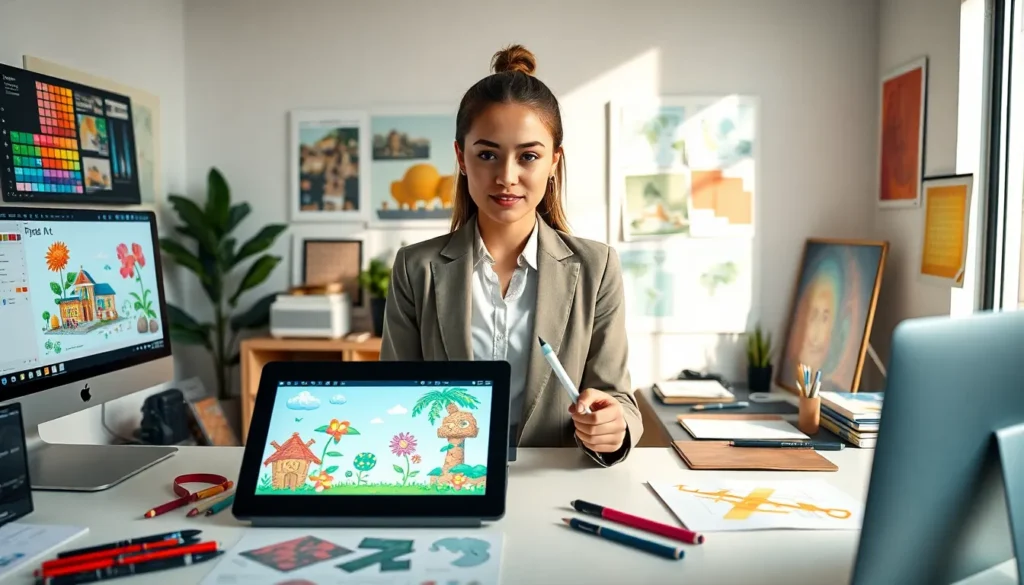Table of Contents
ToggleIf you think contemporary art is just a bunch of splatters and scribbles, think again. Painting in this era is not only vibrant and varied but also deeply reflective of today’s societal issues. Imagine a world where every brushstroke tells a story, and every color has a purpose. Buckle up, because we’re about to explore the fascinating universe of contemporary paintings, where creativity knows no bounds.
Understanding Contemporary Art

Contemporary art is like a mirror reflecting our current times. Spanning from the 1970s to the present, this genre breaks away from traditional methods and subjects, paving the way for new voices and perspectives. Artists now challenge norms, often using their work to comment on political, social, and cultural issues.
But what exactly defines contemporary art? Unlike the art of previous eras, contemporary pieces can embrace any medium, from paintings to installations and digital art. This fluidity allows for an incredible range of expression, making it both exciting and accessible. Not tied to any specific style or ideology, contemporary art invites everyone to engage.
What binds contemporary paintings together is their insistence on questioning the status quo. They prompt viewers to think critically about reality and reflect on their own experiences within it. Immerse yourself in this art form: you may find perspectives you never thought to consider.
Characteristics of Contemporary Paintings
Contemporary paintings come with a variety of characteristics that make them stand out. First, there’s diversity in styles. From abstract and figurative to pop and street art, the range is astounding. Each painting offers a unique look into the artist’s mind and the world around them.
Also, contemporary paintings often employ unconventional materials. Think of fabric, found objects, and even recycled items. Artists use whatever they feel enhances their message. This approach breaks down barriers between art and other forms of cultural expression.
Color play also takes center stage. Bold, vibrant hues might grab your attention, while subtle tones create an air of mystery. Layers of color often symbolize deeper meanings, allowing viewers to unravel stories within each piece. Finally, there is a strong emotional connection: contemporary paintings often invite viewers to experience the artist’s personal feelings or societal commentary, fostering a rare intimacy.
So, when encountering contemporary art, appreciate the myriad elements at play.
Notable Contemporary Artists
The world of contemporary art boasts a plethora of inspiring figures whose contributions have revolutionized the scene. Take, for instance, Yayoi Kusama, known for her whimsical polka dots and installations that explore themes of infinity and self-obliteration. Her work invites viewers into her unique universe, one filled with both chaos and order.
Then there’s Ai Weiwei, a Chinese artist whose art serves as a powerful political statement. His installations push boundaries, highlighting human rights issues and the struggles of the marginalized. In a different realm, Banksy, the elusive street artist, brings social commentary to urban spaces through politically charged graffiti that often leaves the public questioning societal norms.
And let’s not forget about Kara Walker. Tackling complex issues around race, gender, and violence, her cut-paper silhouettes provoke deep conversations and challenge viewers to confront uncomfortable truths. Each of these artists exemplifies the vastness of contemporary painting, merging personal and political narratives to leave an indelible mark.
Influences and Movements in Contemporary Painting
Contemporary paintings are not created in a vacuum: they reflect broader cultural movements and influences. One significant influence is the rise of technology. Artists now use digital tools not just for creation but also for dissemination. Digital painting, augmented reality, and even NFTs (non-fungible tokens) are reshaping how art is made and experienced.
Also, social movements like feminism, environmentalism, and LGBTQ+ rights have permeated the art world. These movements inspire artists to incorporate their activism into their work, making the canvas a platform for dialogue. This fusion of activism and art creates a powerful space for voices that may have been historically marginalized.
The Role of Technology in Contemporary Art
Technology’s role in contemporary art extends beyond mere tools. It enhances interaction and broadens accessibility. Virtual exhibitions allow art lovers from all corners of the globe to experience artworks they might never visit in person. Also, social media has transformed how artists connect with audiences. Platforms like Instagram serve as gallery walls, turning everyday viewers into active participants in the art world. This interplay between technology and art fosters engagement and democratizes the process of viewing and appreciating art.
Collecting and Valuing Contemporary Paintings
Collecting contemporary paintings can be thrilling yet challenging. The art market is as dynamic as the artists themselves, with prices fluctuating based on trends and demand. Understanding the value of contemporary paintings often goes beyond monetary worth: it encapsulates the cultural significance of the work and its impact on society.
When collecting, it’s crucial to research artists and their backgrounds. Collectors should seek out emerging talents as well as established names. Attending gallery openings, art fairs, and auctions can also provide insights into the art market. Engaging with local art communities fosters connections and a deeper appreciation for the work being created.
Challenges and Critiques of Contemporary Art
Even though its vibrance, contemporary art faces its share of critiques. Some argue it can be exclusionary, often catering to a niche audience that understands its complexities. Others voice concerns over commodification, questioning whether art becomes too focused on marketability rather than authenticity. This ongoing discourse reflects the tensions inherent within the art world, a balancing act between commercial interests and creative integrity.




